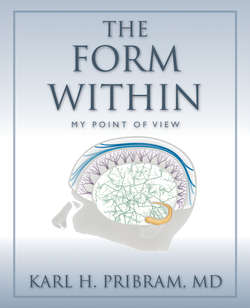Читать книгу The Form Within - Karl H Pribram - Страница 18
На сайте Литреса книга снята с продажи.
Presenting the Results of Experiments
ОглавлениеI arrived at each lecture site with my five window shades, found places in the lecture hall to hang them, and pulled the maps down when I needed them. The high point of this display was reached during a symposium at the 1950 meeting of the American Psychological Society at Penn State University. The symposium was chaired by Don Hebb, by now the chairman of the Department of Psychology at McGill University in Montreal. It was a time when interest among establishment experimental psychologists in brain research had reached a nadir, to the point where they had even abolished the Division of Comparative and Physiological Psychology of the American Psychological Association.
Being good friends, Hans Lukas Teuber from the Department of Neurology at New York University, Harry Harlow from the University of Wisconsin and I as participants therefore decided to attack each other as bluntly as we could with the hope of creating some interest in the audience.
Much to our surprise, more than 800 psychologists filled the lecture hall, even sitting on the steps. The participants of the symposium each made a presentation; I started the symposium and was roundly attacked first by Harlow for “using only one or two problems to test my monkeys,” then by Teuber, who merely stated: “Just like a neurosurgeon, to hog all the space available (my window shades) only to show that we really haven’t come very far since the days of phrenology.” When it came my turn to criticize Harlow, I noted that we at Yale at least knew how to distinguish the front of the brain from the back; and after Teuber had given a most erudite and very long talk, quoting every bit of research that had been performed over the past century, I noted that he seemed not to know the literature, having missed the seminal volume on the functions of the motor cortex (edited by my neurosurgical mentor Paul Bucy, who shortly became head of the Department of Neurosurgery at Northwestern University).
The audience had quickly caught the spirit in which we were making our attacks, and the lecture hall rang with laughter. A considerable number of influential experimental psychologists have told me that their interest in brain research stemmed from that symposium.
I published my critique of 19th-century mapping procedures in a 1954 paper titled “Toward a Science of Neuro-psychology: Method and Data.” By this time, I felt that brain mapmaking, even when carefully based on sustainable correlations, was not sufficient to constitute a science. Just because we can show by electrical recording or by clinical or surgical damage that a select place in the brain is involved in color vision does not mean that it is the or even a “center” for processing color. We need to establish by behavioral techniques (for instance, tests of form vision) what else those cells in that location in the brain are doing—and then we must also show, through carefully controlled physiological experiments (for instance, by electrical stimulation or electrode recording), how these particular parts of the brain do what they do.
